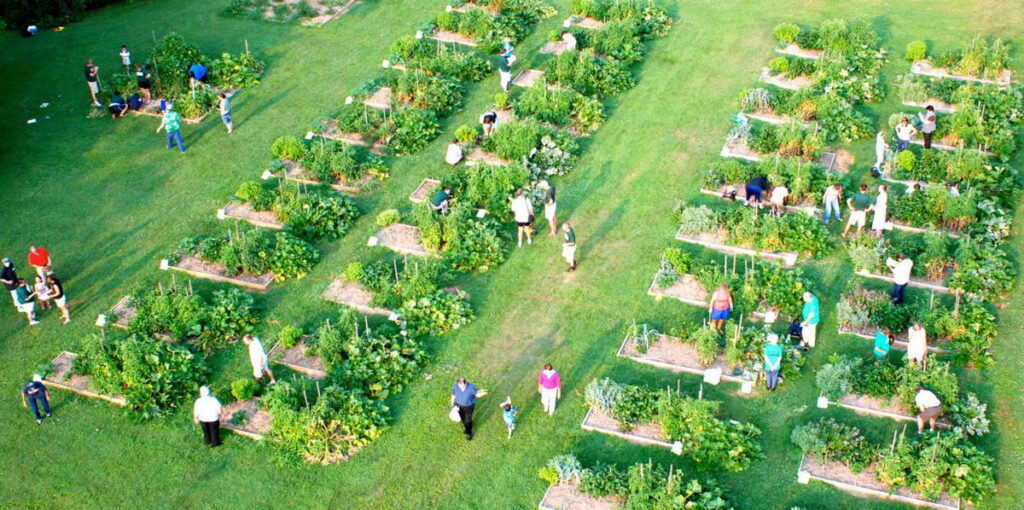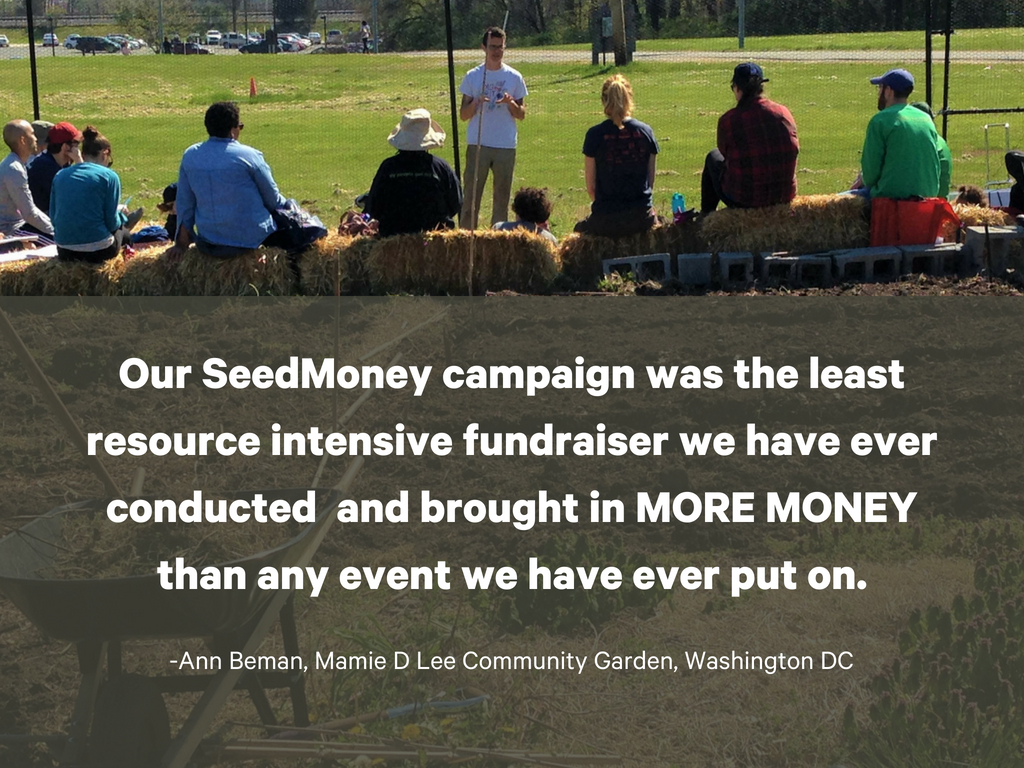The Benefits of Community Gardens
Community gardens provide numerous health benefits, including improved access to food, improved nutrition, increased physical activity and improved mental health. Community gardens also promote social health and community cohesion by offering a safe and welcoming space for people including socially-disadvantaged populations such as immigrants and refugees.
Finding Local Gardens
When getting involved in community gardening, the first step is finding gardens near you! To do that, there are multiple methods. One method is searching the American Community Gardens Association’s database of registered community gardens (see link below). While this is often a useful resource, some local community gardens may not be in its database.
If the ACGA database does not show any local gardens, your best bet would be to search local municipalities’ parks departments. You can do this by navigating their website, calling them, or speaking to employees in person.

Getting a Plot
Many community gardens are both popular and space-constrained. This means that most, if not all, of the plots in a given garden may already be in use. If this is the case, you have a few options.
If you feel strongly about the garden that you’ve chosen to try to be a part of and you don’t want to garden elsewhere, consider joining the waiting list for a plot in your specific community garden is a great option. This way, you don’t have to compromise on switching to a different garden or take on a leader role of another garden. In the meantime, you can grow herbs on a windowsill or a balcony, if you have one.
Another option is to simply go to another local community garden and to try to secure a plot there. Two more options that we will delve deeper into are starting a community garden and opting for a garden in your backyard.
Starting a Community Garden
This is an exciting piece of community gardens where you get to a chance to be one of the main drivers in getting a community garden project off of the ground. Below, you will find some links that go through the step-by-step processes of starting a community garden.
An important thing to decide when gauging community interest and starting a community garden is the garden’s mission. Many community gardens are just a way for people to try their hand at gardening and to grow new friendships. A good chunk of community gardens will also donate their food to various organizations, such as homeless shelters and food pantries.
When you are in charge of a community garden, you are also in charge of developing a site plan. A useful tool in doing so is our Garden Planner Tool found on our website at gardenplanner.seedmoney.org.

Another thing to consider when starting a community garden is funding. Do you want your garden to charge a membership fee? Or do you want membership to be free at your garden? At SeedMoney, we offer both grants and a crowdfunding platform for those seeking to start community and school gardens. You can apply for funding here: https://seedmoney.org/apply.
Whatever strategies you take in building a community garden, be happy knowing that you are helping to build community as well. You are helping your neighbors get to know each other better and helping people eat healthier.
Backyard Gardening
When community gardens are not available in your area and you are not up to the challenge of spearheading a new community garden project, backyard gardening is a great option if you have the space.
Here is a useful blog post from our website that teaches you how to start your very own backyard garden: https://seedmoney.org/blog/kitchen-gardening-101-how-to-grow-your-own-food
Even if you don’t have a backyard, try growing something in your living area. Potted basil and other herbs can have very small footprints. Despite their size, they can have a huge boost on your feeling of self-sustainability and your cooking. After all, no food tastes better than that which you have grown yourself.
Growing Strategies
Following the guidelines from our Kitchen Gardening 101 post, one of the most important things you can do in your community garden is growing food you like to eat. It will keep you more invested in the garden and keep you gardening.
Depending on the rules of your garden, you may be unable to use pesticides or herbicides. If you want to keep your garden naturally free of pests, a good strategy is to grow bright flowers alongside your fruits and vegetables. These bright flowers will attract bigger insects that naturally keep the pests that eat your plants at bay.
Garden Rules
Generally, community gardens have rules about the condition in which plots must be maintained. Depending on the popularity and the size of the garden, these could be more or less stringent.
Community garden leaders often want to promote a clean, good-looking green space that is inviting and grows as much in community as it does in food. In this vein, it is a good idea—and often a rule of community gardens—that you keep your garden weed-free and keep your plants watered and fed well.
External Resources for Community Gardening
- University of Missouri Community Garden Tips: https://extension2.missouri.edu/MP906
- Obama White House Community Garden Tips: https://letsmove.obamawhitehouse.archives.gov/community-garden-checklist
- ACGA Community Garden Resources: https://communitygarden.org/resources/community-garden-start-up-resources/
- If you’d like to donate to SeedMoney, you can do so here: https://seedmoney.org/#donate


